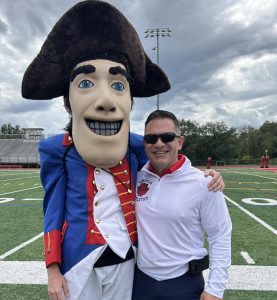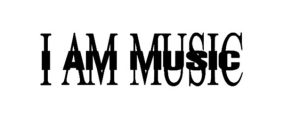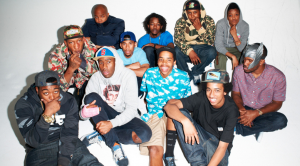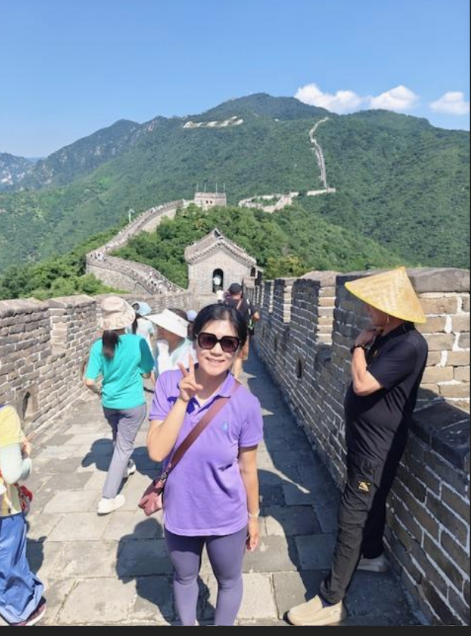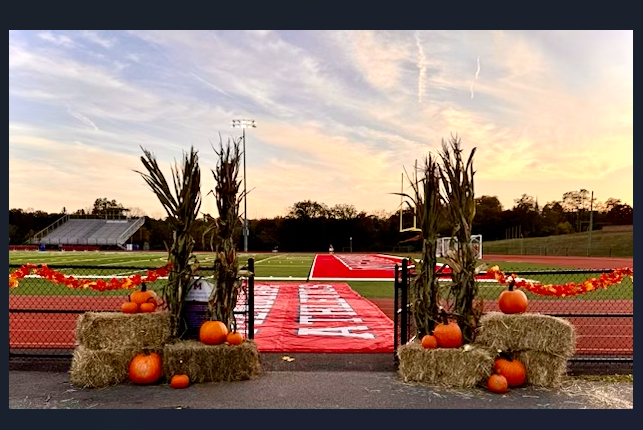A Hanukkah Holiday
December 19, 2018
Hanukkah (or Chanukah) is the most well known Jewish holiday, yet its origin is not well known to most.
Origin of Hanukkah
Hanukkah begins on the 25th of Kislev, the ninth month on the Hebrew Calendar. This holiday celebrates the rededication of the Second Temple in Jerusalem and their victory against the Romans in the second century B.C. Fittingly, in Hebrew, Hanukkah translates to “Dedication.”
Around 200 B.C., the Syrian-Greek Empire conquered Israel, but, the Jewish people were still allowed to maintain their faith. However, around 147 B.C. the madman known as Antiochus IV rose to power. He believed that the only way to unify his kingdom was to have a common culture and religion. In order to create this unified kingdom, Antiochus suppressed the Jewish people and all of their laws. The High Priest, Yochanan, was replaced with his brother who used his high position to spread the Greek faith and customs throughout the Jewish community.
When Antiochus left to conquer Egypt, the remaining loyal Jewish people rebelled against the High Priest and drove him out of Jerusalem. However, when Antiochus returned from Egypt he was enraged by what the Jewish people had attempted. As a punishment, Jewish worship was forbidden, all holy scriptures and scrolls were confiscated and burned. The tradition of Sabbath rest, circumcision, and dietary practices were forbidden under penalty of death. The Jewish temple was destroyed and dedicated to Zeus, the Greek god of the sky and thunder. The Jewish people were constantly being killed for their faith and the only safe place for them were the caves in Judea.
After fleeing to the caves in Judea, Jewish Priest Matthathias and his five sons, known as the Maccabees, organized and executed a large scale rebellion against Antiochus IV. The assault succeeded and they defeated Antiochus’ army three times before Antiochus finally gave up. After this large of a success, the Maccabees returned to Jerusalem to liberate and cleanse the Temple. Matthathias’ son, Judah Maccabee, became the ruler of the Israeli Nation and ordered for the Temple to be rebuilt and rededicated. Judah also ordered for the Menorah, whose seven branches represented creation and knowledge, to be once again lit.
The Hanukkah “Miracle”
According to the Talmud, one of the most sacred Jewish texts, those who took part in the rededication of the Second Temple witnessed what was considered to be a wondrous miracle. One of those witnesses was Judah Maccabee, ruler of the Israeli Nation. When the Menorah was relit the first night, there was only enough oil to keep it burning for one day. But, by some miracle, it burned for eight days and eight nights, which gave them enough time to find a fresh supply to keep the Menorah burning forever. This event is considered to be the famous Hanukkah Miracle. From then on, the Jewish Sages declared that there was to be a yearly eight-day Festival of Lights to celebrate the wondrous Hanukkah miracle.
Today, the Menorah contains nine candles instead of the original seven. The eight candles represent the number of days the Menorah burned for in the Second Temple, and the ninth candle is used to light the other eight each night of the other Hanukkah celebration.
Hanukkah Traditions
Menorah For the celebration of Hanukkah a special menorah called the Hanukkiah. This menorah has nine branches, eight of which represent the eight miraculous nights that the oil burned. The ninth branch is for the Shamash (servant or helper) candle, meaning servant or helper, candle. The shamash candle is the first one lit each night after sundown. Once the shamash is lit it is then taken out if its holder and used to light the other candles going left to right. While the candles are being lit the person lighting the candles says a blessing to God. On the first night, there is only one candle beside the shamash, on the second there is two and this continues on until the last night when all nine holders are filled. As the candles are lit each night family members stand around the menorah and watch as the candles are lit to represent the miracle that allowed the Maccabee’s oil to burn eight nights instead of one.
Dreidel A common game to play during the celebration of Hanukkah is Dreidel. The game originated from the time when the Maccabee children not allowed to study the Torah was forbidden. The children would put away their studies and pull out a four-sided top and pretend to play games when any Greek officials passed by. The top is now called a dreidel. The game is traditionally played with coins, candies, and sometimes chocolate coins. Each of the four sides has a symbol. The symbols are called Gimmel (ג), Nun (נ), Hay (ה), and Shin (ש). Whichever symbol land facing up is the one spun by the player. When Gimmel is spun the player takes all, nun they take nothing, hay they take half, and shin they put one back. Many times when the adults are off talking the children of the families will take advantage of their time together and play a game of Dreidel.
Family Many families have similar Hanukkah traditions. Families will come together each night to light the menorah, but the family celebrations do not stop there. Families and friends will go to one or more parties throughout the eight nights of this holiday. At the parties family and close friends join together and celebrate with food, gifts and the telling of the story of the Hanukkah miracle. They will indulge in foods common to the holiday, such as latkes and sufganiyot. Latkes are fried pancakes made with ground or grated potato. Sufganiyot are fried, round donuts filled jam and sometimes custard, and then sprinkled with powdered sugar. Not only is there fried food for eight days, but presents as well. During this holiday gifts are given from relative to relative. Each night the family will come together giving each other one gift per night. They will then gather around and tell each other of the miracle that is now celebrated as the Festival of Lights.





